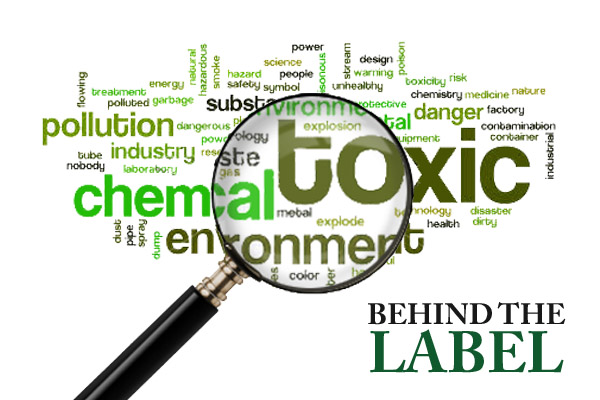Behind the Label: Clairol Nice ‘n Easy Haircolour 120

In a culture obsessed by quick fixes, permanent hair colours are a fashionable and inexpensive way to transform your life. Change your hair colour and you too can have celebrity good looks and youthfulness. And, as an extra bonus, most colorants now boast ‘gentle’ ingredients that nurture your hair. Business is understandably booming, overshadowing a disturbing amount of data linking regular hairdye use with a range of different cancers.
Permanent hair dyes consist of two components: colour and developer. The colour component usually contains a range of synthetic dyes and intermediates such as ammonia, diaminobenzenes, phenylenediamines, resorcinol and phenols. Mixed with a developer such as hydrogen peroxide the colour oxidises to produce a particular shade.
Many hair-dye ingredients are powerful irritants and allergens. As a result, hair dye sold in the EU containing phenylenediamines, resorcinol and 1-naphthol must carry the following warning: ‘Can cause allergic reaction. Do not use to colour eyelashes or eyebrows.’
In the US products containing the coal-tar ingredient 4-methoxy-m-phenylenediamine (4-MMPD, 2,4-diaminoanisole) must carry this warning: ‘Contains an ingredient that can penetrate your skin and has been determined to cause cancer in laboratory animals.’ No such warning is required in the EU.
Other hair-dye ingredients (4-chlorom-phenylenediamine, 2,4-toluenediamine, 2-nitro-p-phenylenediamine and 4-amino-2- nitrophenol) have also proven carcinogenic in at least one animal species. And coal-tar dyes have been found to cause cancer in laboratory animals, yet no warning is required for either.
Media coverage of recent hair-dye disasters has tended to defer to the default position of the Cosmetic, Toiletry and Perfumery Association that all toiletries and cosmetics are safety-tested. Most of these tests look for skin reactions only. In truth, anaphylactic shock, the most extreme and life-threatening allergic reaction, is a rare reaction to hair dye.
More disturbing are the longer-term effects associated with permanent hair dyes. These include breast cancer, ovarian cancer, bladder cancer and rheumatoid arthritis, as well as a signifi cantly increased risk of otherwise rare cancers such as non-Hodgkins lymphoma and multiple myeloma.
Several factors provide a safety net for a largely self-regulating industry. One is the large variation in the chemical content of hair dyes. This means that when an association with a health risk is found it is difficult to know which ingredient is the culprit. In addition, cancer is a slow-developing disease. By the time it surfaces, it is diffi cult to prove beyond a shadow of a doubt which particular exposure was the cause. This is good news for manufacturers, which can continue to produce potentially toxic products with impunity and without risk of litigation, but bad news for the rest of us.
Hair dyes racked up £196.4m in sales last year, and permanent dyes accounted for 67 per cent of these purchases. Clairol Nice ’n Easy, owned by household products multinational Procter & Gamble, is the UK’s leading brand.
Sidebar: Ingredients
Hexylene glycol: Solvent. Irritating to eyes, skin respiratory tract. Prolonged contact may cause dermatitis.
Propylene glycol: Solvent. Irritating to eyes, skin respiratory tract; penetration enhancer; alters skin structure, allowing other more toxic chemicals to penetrate more deeply into the skin, and eventually the bloodstream.
Soytrimonium chloride: Surfactant, detergent. A quaternary ammonium compound and as such toxic by all routes of exposure. Skin and airway irritation are common. Depending on the concentration, quaternary compounds may also produce nausea, vomiting, abdominal pain, anxiety, restlessness, coma, convulsions, respiratory muscle paralysis.
Isopropyl alcohol: Solvent. Irritates eyes and mucous membranes; central nervous system depression. Prolonged contact can cause eczema and sensitivity. Animal studies show inhalation can damage the liver.
Ethanolamine: Surfactant, dispersant. Irritating to the skin, eyes and lungs; asthma; at high concentrations, central nervous system damage; quickly absorbed into the skin, can accumulate in the liver and kidneys; can mix with other ingredients (ie, quaternary compounds) to form carcinogenic nitrosamines during storage and use.
O leth-5, oleth-2: Emulsifiers, surfactant. Allergens; in the same family as PEG compounds; may contain impurities linked to breast cancer (eg, 1,4-dioxane, ethylene oxide); toxic to aquatic organisms.
Parfum: Fragrance. Asthmatic reactions; skin irritation; central nervous system disruption (eg, headache, mood swings, depression, forgetfulness);artificial musks are hormone-disrupting.
Cocamidopropyl betaine: Surfactant Skin/eye irritant; may cause allergic reaction; can promote the formation of carcinogenic nitrosamines.
Ammonium hydroxide: pH adjuster. Highly corrosive; irritation and burns to the skin, eyes and respiratory tract; skin cancer.
p-phenylenediamine: Coal-tar dye. Potentially carcinogenic; immune system dysregulation; skin damage and allergic reactions; irritating to the eyes; toxic to wildlife, soil.
1-naphthol: Oxidising agent. Derived from coal tar, linked to cancer and other potential health problems in humans; pesticide ingredient.
Resorcinol: Oxidising agent. Irritating to eyes and skin; allergen; hormone-disruptor linked to reproductive effects; thyroid damage; central nervous system effects, including dizziness, nausea, altered heart beat and restlessness.
Phenyl methyl pyrazolone: Intermediate, oxidizing agent. Irritant; inhalation may result in headache, runny nose, cough, shortness of breath, chest pain; derived from coal tar, so potentially carcinogenic; animal data suggests in utero exposure increases learning difficulties.












